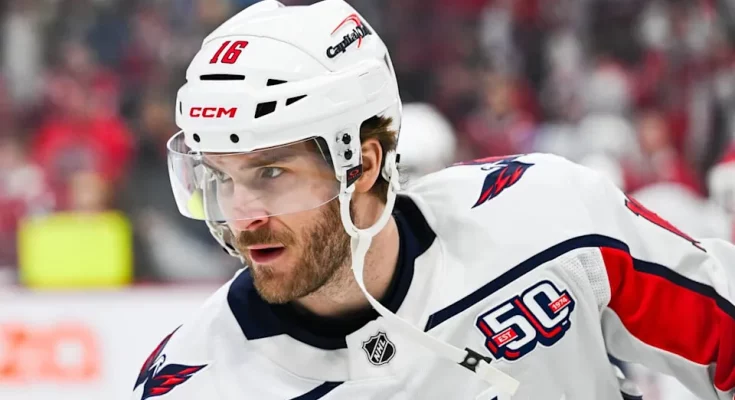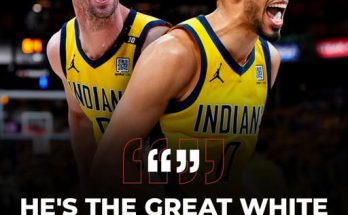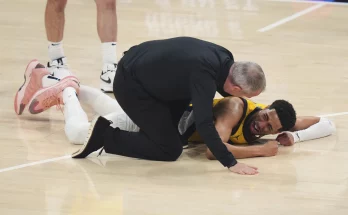When it comes to championship aspirations, depth is no longer a luxury—it’s a necessity. The New York Rangers are well aware of that reality, and their latest move signals a clear intent to insulate their forward group from the pitfalls of fatigue, injuries, or playoff attrition. By signing Taylor Raddysh to a two-year contract, the Rangers have made a calculated, forward-thinking addition to their bottom-six corps. It might not make the splash of a marquee signing, but this acquisition could pay major dividends when the grind of an 82-game season and beyond takes its toll.
Taylor Raddysh, a 6-foot-3 winger known for his combination of size, shooting ability, and versatility, joins the Rangers at a pivotal time. The team has been gradually retooling, trying to find the right mix around stars like Artemi Panarin, Chris Kreider, Mika Zibanejad, and Adam Fox. With a core that’s built to win now, adding capable depth options like Raddysh is more than just a marginal move—it’s a message that the Rangers are looking for stability, secondary scoring, and players who can contribute without needing top-line minutes or premium ice time.
Raddysh, 26, spent the last two seasons with the Chicago Blackhawks, where he showed flashes of offensive potential, including a career-high 20 goals in the 2022-23 campaign. While Chicago has been deep in a rebuilding phase, Raddysh often found himself playing with younger linemates, absorbing difficult matchups, and logging meaningful minutes in a challenging environment. That experience, while not always glamorous in the standings, sharpened his two-way game and gave him an appreciation for defensive accountability—traits that will be crucial in his new role with the Rangers.
What sets Raddysh apart from the usual depth forward is his offensive ceiling. He has a quick, deceptive shot that he can release in stride and a knack for finding soft spots in defensive coverage. Though not an elite skater, he uses his size effectively to protect the puck and battle along the boards. He’s not just a placeholder for a fourth-line role; he’s someone who could easily float up to a third line or even a second power-play unit in a pinch. That kind of plug-and-play flexibility is something playoff-bound teams crave. In essence, Raddysh offers a coach like Peter Laviolette more tactical options when injuries or line chemistry issues arise.
For the Rangers, the signing is also a response to recent challenges. In the 2023-24 season, the team was exposed in certain matchups due to a lack of scoring punch from their bottom six. Players like Barclay Goodrow and Jimmy Vesey were serviceable but not dynamic. The fourth line often struggled to shift momentum or wear down opponents, something that’s crucial in a tight-checking playoff series. By bringing in Raddysh, the Rangers hope to not only increase their offensive depth but also add a level of grit and physical engagement that can shift the tide during tense playoff games.
This signing also aligns with general manager Chris Drury’s larger strategy. Since taking over, Drury has emphasized the importance of internal competition, value contracts, and players who can grow into larger roles. Raddysh fits that mold perfectly. At just 26, he still has room to develop and refine his game. The two-year term is ideal—it gives Raddysh security while allowing the Rangers the flexibility to evaluate his impact without long-term risk. The contract is reportedly cap-friendly, which is another important aspect given the tight salary cap landscape the team must navigate.
Another layer to this move is the mentorship aspect. Raddysh will be entering a locker room that includes veterans with deep playoff experience and strong leadership qualities. Sharing ice with players like Kreider and Zibanejad—not to mention being coached by Laviolette—could help elevate Raddysh’s game further. He won’t be asked to be the guy, but he’ll be given every opportunity to be a valuable piece. Sometimes, that kind of role clarity unlocks a player’s best self, especially when they feel supported and utilized properly.
Looking at the Rangers’ bottom six now, things look a lot more structured. With Raddysh in the fold, Laviolette can potentially deploy more balanced lines. Raddysh might find himself on a line with a speedy center like Jonny Brodzinski or an energy winger like Will Cuylle. The goal isn’t to turn the bottom six into an offensive juggernaut—it’s to create lines that can hold possession, draw penalties, chip in 10-15 goals over the season, and grind out defensive assignments against tougher opponents.
There’s also a hidden upside in what this means for the Rangers’ prospects. By signing a reliable and NHL-ready forward like Raddysh, the team avoids rushing younger players into roles they may not be ready for. Talented prospects like Brennan Othmann, Gabe Perreault, or Adam Sýkora now have a clearer path to development, rather than being thrust into difficult roles too early. They’ll get time in the AHL or sheltered minutes when called up, easing the transition to the pro level. This balancing act between youth and proven depth is something Drury and his front office have clearly prioritized.
Statistically, Raddysh’s numbers won’t blow anyone away at first glance. In 2023-24, he tallied a modest 25 points in 70 games, but again, context matters. He was playing on a depleted Chicago team that struggled to generate offense. What matters more is how he performed in high-leverage situations—his individual expected goals rate, his forechecking efficiency, and his ability to maintain puck possession in the offensive zone. On those fronts, Raddysh quietly delivered. He created space, sustained pressure, and forced turnovers, all traits that won’t always show up on the scoresheet but make a major difference over the course of a season.
It’s also worth noting that Raddysh brings a championship pedigree from his junior days. A member of the dominant Erie Otters team that featured players like Connor McDavid and Alex DeBrincat, Raddysh knows what it takes to win in a high-pressure environment. While junior success doesn’t always translate directly to the NHL, the mindset, habits, and preparation learned in those moments tend to stick. He’s been through the ups and downs of trying to carve out a role in the league and has emerged as a player who’s willing to adapt and do the little things right.
From a locker room culture standpoint, players like Raddysh are often glue guys. They show up, put in the work, and don’t need the spotlight. That consistency and work ethic resonate with teammates and help establish a tone across all four lines. It’s not just about who’s scoring—it’s about who’s showing up ready to play every night. For a team trying to make another deep playoff run, those intangible qualities matter just as much as points and plus-minus ratings.
In terms of expectations, no one is anticipating a breakout 30-goal season from Raddysh. But if he can give the Rangers 12-15 goals, reliable defensive play, and a physical presence on a nightly basis, this contract will look like a bargain. The Rangers aren’t just filling a roster spot—they’re making a bet on a player who fits their style, complements their stars, and understands the demands of a competitive market like New York.
As the offseason progresses, this signing may get lost in the shuffle of bigger names and blockbuster trades. But often, it’s the quiet additions in July that end up playing pivotal roles in May. If Taylor Raddysh can become a dependable, physical, and offensively capable bottom-six presence, his impact will be felt not in headlines, but in key penalty kills, crucial forechecks, and grinding playoff shifts when games are won or lost in the trenches.
Ultimately, this move underscores the Rangers’ maturity as a franchise. They’re no longer just chasing stars—they’re building a balanced, resilient roster that can handle the wear and tear of a long campaign. And with Taylor Raddysh now donning a Blueshirt, that foundation just got a little bit stronger.



